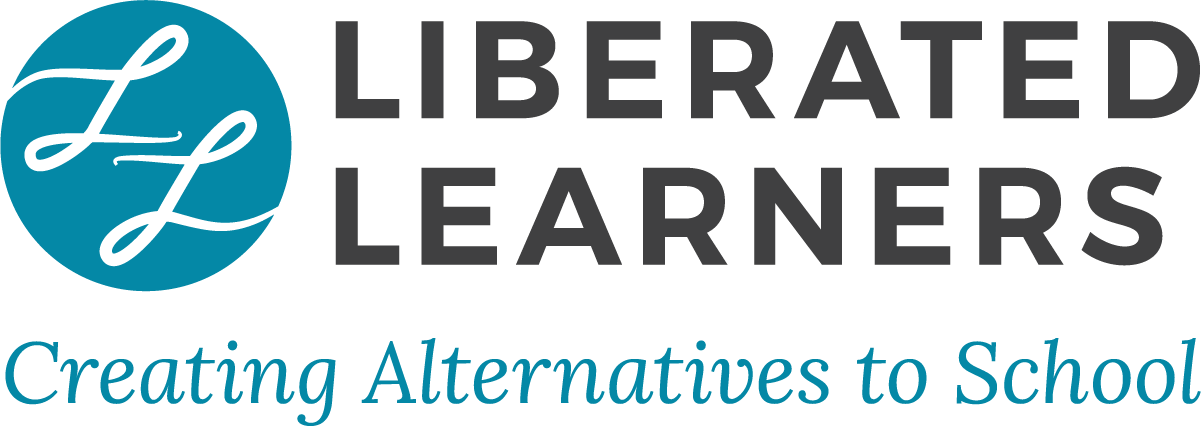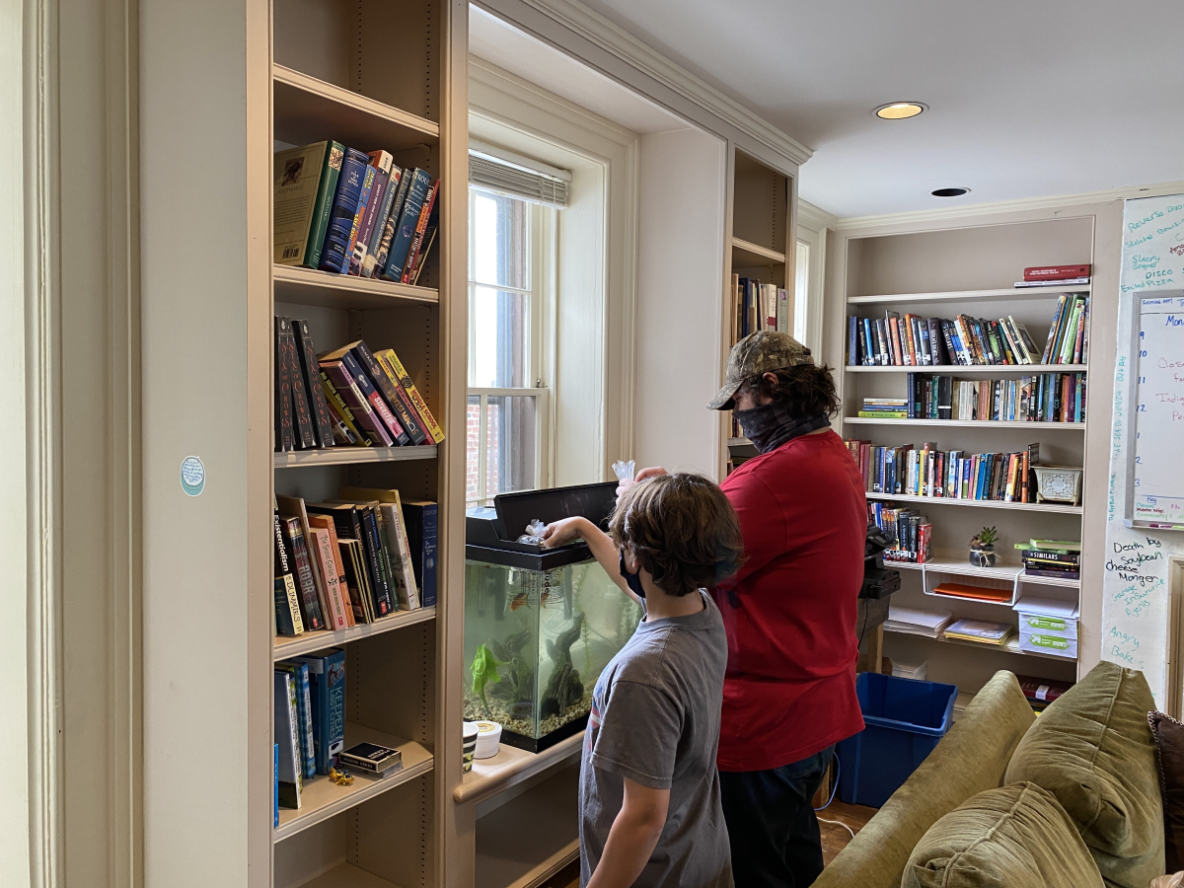By Alison Snieckus
Liberated Learner centers are well known for serving teens. It’s not too surprising because the impetus for starting the Liberated Learners network was to support people to “replicate” North Star. North Star’s membership ranges in age from 12 to 19 years old; its subtitle is “Self-Directed Learning for Teens.” Liberated Learners has been around now for seven years and we are starting to see more centers including younger kids. North Star’s choice to work with teens was based on the professional interests of its founders. Now, even those folks see the need to support elementary-school-age children to have an alternative to school.
LL centers don’t follow an educational model, except to say that “all center activities and attendance are strictly optional.”1 Centers are free to structure the program at their center in whatever way works best for them. For example, centers can include Agile Learning tools, one-on-one or group-style mentoring/advising, or democratic elements from Sudbury and Democratic schools. The only requirement is that the young people attending the program choose when and how they’d like to participate. LL has no requirement to include any particular programmatic element—centers are free to create program structures that best serve younger children.
One of the benefits inherent to Self-Directed Education (SDE) centers is free age mixing. No doubt young people deeply connect with and grow from interactions with close-in-age peers, like best friends who share everything—ideas, favorite pastimes, clothes, mannerisms, etc. But, the opportunity to interact with people of all ages at an SDE center creates a vibrant and engaging learning environment with many opportunities for growth, for both younger and older children.
In his book Free to Learn: Why Unleashing the Instinct to Play Will Make Our Children Happier, More Self-Reliant, and Better Students for Life, Peter Gray makes the case that education is an individual’s responsibility and schools actively “thwart children’s educative instincts.”2 His research indicates that an individual is best able to educate themselves in an environment that encourages “curiosity, playfulness, and meaningful conversation.” Gray maintains that one of the key elements in an SDE environment is “the free age mingling of children who differ broadly in age…”2 and outlines the specific advantages of free age mixing for younger children:
In age-mixed groups, the younger children can engage in and learn from activities that would be too complex, difficult, or dangerous for them to do on their own or only with others their own age. They can also learn simply from watching the more sophisticated activities of older children and overhearing their conversations. And they can receive emotional support and care beyond what age-mates could provide.”2
The video above is a good example of a younger child engaging in a complex activity with older children. The six-year-old’s curiosity draws him to the marble structure. He says, “More. More.” and the older child says, “No more”, concerned that more marbles could clog the flow and break his creation. To many adults, this may look like superfluous play, but there's much more going on. Both children are making requests of each other, learning how to establish and respect boundaries, and building collaboration skills. In his writing and research, Gray looks underneath many similar stories, offering compelling evidence that play is how humans learn the many and varied skills we need for adult life. In conventional school these young people would not have had the opportunity to play freely with children of varied ages and abilities.
As for the advantages of free age mixing for older children, Gray writes:
By interacting with younger children, older ones practice leadership and nurturance, and they gain the experience of being the mature one in the relationships…. Older children also gain deeper understandings of concepts by teaching younger ones, which forces them to think about what they do or don't know. And just as older children inspire younger ones to engage in more complex or sophisticated activities than they otherwise would, younger children inspire older ones to engage in more creative activities than they otherwise would.2
And lastly, Gray points out that free age mixing allows “a person who is ahead of or behind his or her age-mates in some realm to find equal partners among older or younger children.”2, 3
I’ve witnessed examples of the benefits of age-mixing more times than I can count: an 11-year-old serving as dungeon master in a D&D game with mostly teens, an 18-year-old inviting a mature, but visibly much younger, child into a lively conversation analyzing the current crop of Oscar-contending movies, a writing class where the age of the kids choosing to attend spans more than 5 years, a 17-year-old sharing about how he got his first job with a group that included kids not yet old enough to get working papers. But at Princeton Learning Cooperative, where I work, our members are generally 12-18 years old; we don't realize the full benefit of mixed ages. Part of the reason for that is the state requirements for including younger children.
Many locations have government requirements for running a child care center that may be applicable to an SDE center that includes younger children. In New Jersey (USA). a non-school-affiliated program that serves more than six children under 13 years of age, notwithstanding a number of exceptions, must comply with the regulations set forth for running a child care center. The manual has 102 pages, from staffing to transportation—a bit daunting to say the least! To avoid the struggle altogether, PLC has chosen to keep the number of younger children to 6 or fewer, but this doesn’t help if a center wants to solely serve younger children, or to promote free age mixing of children across a larger span of ages.
The good news is that there are many SDE centers that serve younger children, and who have found a way to meet the local requirements. At a recent ASDE meetup for local SDE groups, I heard the wise advice to talk with the people who oversee the regulations. When a staff person from the regulatory office understands how the center is serving younger children, they may very well be helpful in explaining how the center can meet the regulations, or offer alternatives that might work better for the center (e.g., being a private school, camp, or tutoring center). Worldwide there are many SDE centers that include or are solely focused on younger children. (ASDE maintains a list of SDE communities worldwide, many of which include younger children.)
The LL network currently doesn’t include any centers that are strictly younger-kid programs. Three centers serve a full range of ages. Deep Root Center and Embark Center for Self-Directed Education both began with only a teen program and then moved to extend membership to younger children. Deep Root offers a program specifically for children 10 and under, called Seedlings. Liberty Self-Directed Learning Center is scheduled to open in Fall 2022; they plan to have two groups based on age, one for younger children and one for teens/tweens. In our Starter program, we have a number of teams working on programs that include younger children. Hopefully, in the years to come, the LL network will have programs of all shapes and sizes.
[Video credit: Instagram @embarkcenter. Thank you to Andrea and Catina at Embark for helping me better reflect the interplay in mixed-age group settings.]
1The other LL principles encourage centers to use homeschooling law, not use school-based structures like grades and tests, and meet in person at a physical space.
2Gray, Peter. Free to Learn: Why Unleashing the Instinct to Play Will Make Our Children Happier, More Self-Reliant, and Better Students for Life. (2013). Text quoted from pages 130, 182, 185, 197, and 204.
3Gray’s blog “Freedom to Learn” on psychologytoday.com includes a series about free age mixing, part I, part II, and part III, and many more references to the benefits of mixed-age learning.
Share this Post

